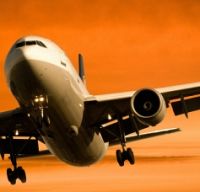

2019 is forecast to be a record-breaking year for air travel, and as such dramatic increases of CO2 emissions will equally occur.
Taking a long haul flight (more than 3 hours long) has been shown to generate more carbon emissions then the average person will produce in an entire year - this highlights the disproportionate carbon footprint of those who can afford to fly against those who cannot - just a short haul flight (from London to Edinburgh) will contribute more CO2 than the mean annual emissions of a person in Uganda or Somalia.
It is at no surprise then, that with a total of 8.1 trillion km of flight distance expected by passengers around the world (a 300% increase since 1990), that the levels of CO2 emitted are at highly dangerous levels. The figures themselves are making sure to take into account the aircraft models typically used on flight routes, and the estimated occupancy of seats on those planes. On top of this, they only account for the CO2 in burning jet fuel, not including emissions embedded in the construction of the plane, or other greenhouse gases (like water vapour) that may be produced.
An average amount of more than 100,000 flights are departing from airports daily, so it is clear that airports need a strategy to deal with this, and to attempt to reduce their carbon footprint. Whilst the aviation sector has the right to expand, and has been doing so, it will need to be conscious of their impact - environmental groups are calling for policymakers to constrain the total number of flights and to limit the further expansion of airports themselves. A proposal mentions a "'frequent flyers' levy" to be expanded upon so only those who take many flights are affected.